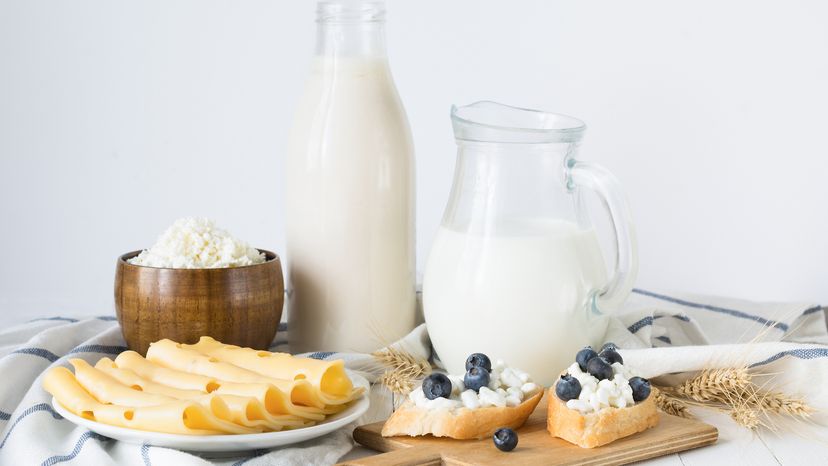
Many folks relish the thought of downing a frosty-cold glass of milk, polishing off a bowl of creamy ice cream, or biting into a piping-hot slice of cheesy pizza. For 30 to 50 million Americans, though, indulging in these dairy delights can trigger gas, bloating, and cramping. The common condition these people share is lactose intolerance.
Milk and other dairy products are a major source of nutrients, so being unable to tolerate an entire food group can make some children and even adults feel they are missing something important. But there are ways you can receive all the calcium your body needs without triggering any unpleasant consequences.
Advertisement
Lactose is the sugar in milk, and an enzyme called lactase is normally responsible for breaking down lactose in your digestive tract after you've consumed milk or a food made from it. Some people, however, don't make enough lactase enzyme to tackle the lactose they consume. They may be missing a little or a lot of the enzyme. Depending on the degree of enzyme deficiency, consuming dairy products, such as ice cream or cottage cheese, can trigger bouts of nausea, cramps, bloating, gas, or diarrhea, usually 30 minutes or so later.
But lactose intolerance is not an all-or-nothing proposition. It's normal for the level of lactase in the intestinal tract to begin declining after three years of age. How steep that decline is varies greatly among individuals, accounting for a spectrum of symptoms ranging from none to a lot of diarrhea, cramping, and gas. The severity of symptoms depends on just how low your levels of the critical enzyme are. In rare cases, children are born without the ability to produce lactase. For most people, though, lactase deficiency is a condition that develops naturally over time. Many people may not experience symptoms until later in life.
One of the most common misconceptions about lactose intolerance is that it is a milk allergy. Though the two are often confused, the difference is a critical one.
The inability to completely digest lactose rarely translates into the need for a milk-free diet. But if you have a milk allergy, even minute amounts can trigger a serious reaction. Symptoms of a true milk allergy include a runny nose, puffy eyes, skin rash, vomiting, tightness in the throat, and difficulty breathing. There is no connection between having a milk allergy, which is due to an immune response to a protein, and having lactose intolerance, which is an enzyme deficiency.
Lactose intolerance is most common in adults, whereas milk allergies are seen mostly in children. Essentially all children who develop a milk allergy develop it in their first year or so, and the vast majority will eventually outgrow it. In the end, very few people carry milk allergies with them into late childhood or adulthood.
If you suspect you may be lactose intolerant, check with your physician for a proper diagnosis.
As mentioned above, how you change your diet to avoid dairy depends on the sensitivity of your body. In the next section, we will show you home remedies that can help ensure you receive your daily dose of calcium.
For more information about remedies for stomach problems, try the following links:
- To see all of our home remedies and the conditions they treat, go to our main Home Remedies page.
- To learn how to treat a sour stomach at home, read Home Remedies for Upset Stomach.
- Home Remedies for Nausea provides valuable tips for easing nausea.
This information is solely for informational purposes. IT IS NOT INTENDED TO PROVIDE MEDICAL ADVICE. Neither the Editors of Consumer Guide (R), Publications International, Ltd., the author nor publisher take responsibility for any possible consequences from any treatment, procedure, exercise, dietary modification, action or application of medication which results from reading or following the information contained in this information. The publication of this information does not constitute the practice of medicine, and this information does not replace the advice of your physician or other health care provider. Before undertaking any course of treatment, the reader must seek the advice of their physician or other health care provider.
Advertisement

